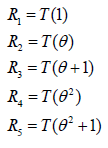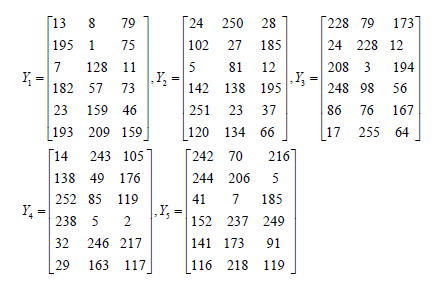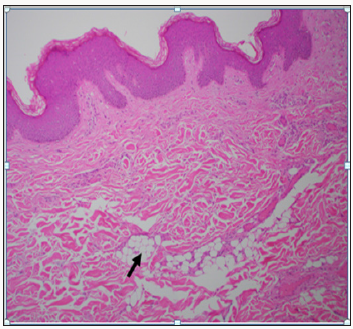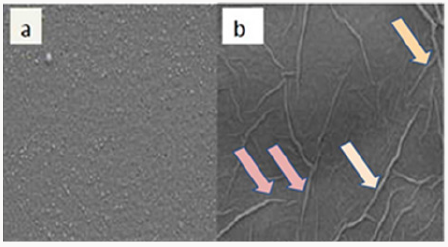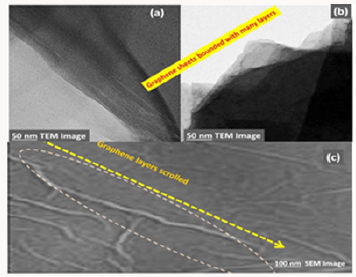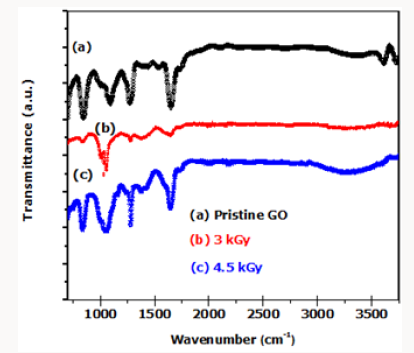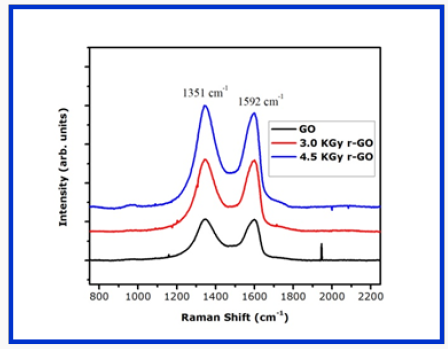We report a case of 31 year old nulligravida with multiple sub
mucosal and intramural fibroid uteri which was managed by laparoscopic
myomectomy. She was asymptomatic and was diagnosed with multiple fibroid
uterus and primary infertility. She and her partner were
evaluated completely for other causes of infertility and all
investigations were normal. She was further evaluated with mapping of
myomas
on Magnetic resonance imaging and underwent laparoscopic removal of all
10 fibroids in the same sitting. In this case report, we highlight
the advantage and the technical challenges in laparoscopic removal of
multiple sub mucosal fibroids in the same sitting that overcomes the
complications encountered during hysteroscopic removal of multiple
fibroids.
Keywords: Laparoscopic myomectomy; Infertility; Sub mucous fibroids; Multiple fibroids
Etiology & Pathogenesis
Fibroids are the most common benign gynaecological tumour
that affects reproductive aged women with a prevalence of 20- 50%
among them [1]. In general, uterine myomas are found in 5% to 10%
of women with infertility. In 1.0% to 2.4% of women with infertility,
myomas are the only abnormal findings [2,3]. Submucous myomas
account for 5.5 % to 10 % of all uterine myomas [4]. Submucous
myoma can be symptomatic irrespective of their size. They cause
menorrhagia that can lead to anemia, infertility [5,6]. The route
of surgery employed depends on the size, number and location
of fibroid. Hysteroscopic resection of the myoma is the gold
standard in selected patients with sub mucous fibroids (type 0,1,2).
However, in women with associated subserosal and intramural
fibroids, multiple sub mucosal fibroids with deep intramural
extension(type1-5,2-5), sub mucosal fibroids more than 5 cm in
size, laparoscopic route is the appropriate choice [7,8].
Hysteroscopic myomectomy has its associated complications of
uterine perforation, fluid overload, uterine bleeding if performed
by an inexperienced surgeon. Prolonged hysteroscopic surgery
can lead to fluid overload and consequent electrolyte imbalance.
In general, sub mucous myomas up to 4 to 5 cm can be resected
hysteroscopically by an experienced surgeon but women with
larger myomas and multiple myomas (>2 in number) benefit from
laparoscopic surgery [8].
Case Report
We report a 31year old nulligravida who presented to.com with a
diagnosis of multiple fibroid uterus when she was being evaluated
for primary infertility. She has been married for 2 years. Her
menstrual history is regular with no complaints of menorrhagia or
dysmenorrhoea. She is a known hypothyroid on supplementation
with thyroxin 25 mcg. No history of other associated medical
co morbidities. There was no history of previous surgery. On
clinical examination, the uterus was of 22 weeks size, irregularly
enlarged, fibroid was palpable in right lateral, posterior fornices
with restricted mobility. She was further evaluated with a Magnetic
resonance imaging (MRI) mapping of the myomas which was
suggestive of multiple fibroids, 10 in total. Five sub mucosal
fibroids, two fibroids were intramural in location and three of them
were subserosal. Both the ovaries were normal on MRI.
a. Operative Technique
The patient was operated under general anaesthesia in the
modified lithotomic position. In view of multiple fibroids, five
sub mucosal, two intramural and three subserosal in location the
patient was planned for laparoscopic myomectomy. Hysteroscopic
resection is the gold standard in management of sub mucous
fibroids. However, laparoscopy was the best choice in our patient
due to the presence of multiple (five) sub mucosal fibroids with large subserosal and intramural fibroids. The need for multiple
sittings, prolonged operative time, and fluid overload that is more
likely after hysteroscopic myomectomy can be completely avoided
when managed laparoscopically. The presence of associated
pathology like endometriosis can be dealt with concurrently. On
abdominal examination, the uterus was noted to be of 22 to 24
weeks size. Pneumoperitoneum was created with veress needle in
epigastria followed by closed technique insertion of primary optical
10mm supraumbilical trocar. Following this, three 5 mm and one 7
mm accessory ports were inserted under vision. The first accessory
port was placed in the left lateral upper quadrant and the second
accessory port was placed in the right lateral upper quadrant. The
third and the fourth accessory ports were placed in the right and
left lower quadrants respectively (Figure 1).
Figure 1: Port placement for laparoscopic myomectomy.
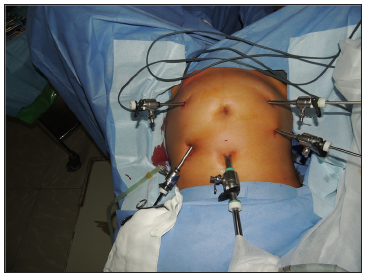
Figure 2: Uterus with multiple fibroids.
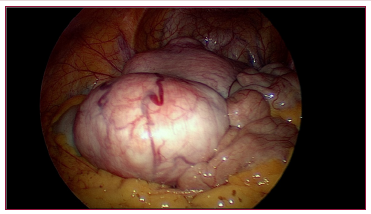
On inspection, uterus was studded with multiple fibroids and
enlarged to 24 weeks size. 3 fibroids were visualised, the first one
was a 6x4 cm subserosal fibroid of type 6 arising from the fundus,
the second one was 3x 3 cm type 5 subserosal fibroid arising from
the anterior and left lateral wall and the third one seen was a 2 x 2
cm subserosal type 5 fibroid arising from the anterior wall of the
uterus lower body (Figure 2). Posteriorly, only the upper half of body
of the uterus was visualised. Lower half of posterior uterine surface
was densely adherent to the rectum and large bowel with both
drawn up to 1/3rd body of the uterus. Rectum was separated from
the posterior surface of uterus and while releasing the adhesions,
chocolate material was drained. After releasing the bowel adhesions,
entire posterior surface of the uterus was visualised. About 4x 4 cm
intramural type 4 fibroid was seen in the posterior wall. Bilateral
adnexa were normal. Bilateral uterine arteries were temporarily
occluded with a hemostatic clip to minimise intraoperative blood
loss that was released after the suturing of myoma bed (Figure 3).
The posterior intramural fibroid was enucleated after giving a 5
cm vertical incision. Another 4x3 cm intramural fibroid type 4 was
enucleated through the same incision. Through the same incision,
the endometrial cavity was opened to 3 cm length (Figure 4). Five
intracavitary sub mucous myomas were visualised, 2 sub mucous
fibroids type 1, each measuring 2 x 2 cm, seen arising from fundus
and posterior wall respectively. 3 sub mucous myomas type 2, each
measuring 3 x 3 cm, 3x 2 cm, 2x2 cm were seen arising from the
right lateral wall of endometrium.
Figure 3: Temporary occlusion of Uterine artery.
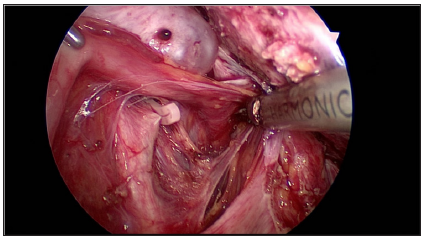
Figure 4: Opening the endometrial cavity.

All the above described fibroids were enucleated. Using
laparoscopic endoultrasound, the entire uterus including the cavity
was scanned intraoperatively to look for the presence of fibroids
(Figure 5). There were no fibroids in endometrial cavity and uterine
musculature as well. Myoma bed was sutured. The posterior vertical
incision was closed in 4 layers. The endometrial cavity was sutured
with No.3-0 PDS, the intramural layer was closed in 2 layers with
V loc sutures and finally the uterine serosa was closed with No.2-
0 Vicryl. The 4cm transverse incision given to remove the fundal
subserosal fibroid was closed in 3 layers with No. 2-0 Vicryl. The
anterior 2 cm transverse incision for removal of the anterior lower
segment fibroid was sutured with No.2-0 Vicryl in three layers.
Uterine artery occlusion was released and hemostasis was ensured.
The right lower port was converted to 12 mm and morcellator was
introduced. Specimen was retrieved by morcellation in endobag.
Figure 5: sing an endoultrasound to identify the location
of submucous fibroids.
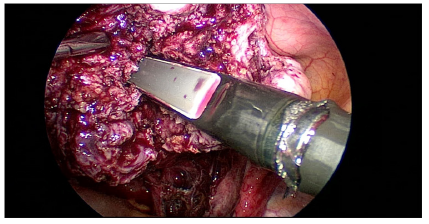
Interceed adhesion barrier was kept over the suture line in the
posterior wall, fundus and the lateral wall of the uterus. Abdominal
drain of size No.20 was kept which was removed on the second
postoperative day. Port closure was done for 12 mm and 10 mm
ports with No.1-0 PDS. The estimated blood loss was 150 ml. The
duration of the procedure was 3 hours from the time of veress
insertion to suturing of skin. Skin was sutured with No.3-0 vicryl
interrupted simple sutures. Post-operative recovery of the patient
was normal. Urinary catheter was removed after 12 hours. She
was started on liquid diet 6 hours after surgery. Intraperitoneal
drain was removed on the second post-operative day as there
was minimal drain output. Patient was given thromboprophylaxis
for deep vein thrombosis with 0.6 ml low molecular weight
heparin, 1 dose preoperatively and for 2 days post operatively. Her
histopathology report was benign leiomyoma. The patient was
doing well in her post-operative review. Postoperatively we have
given the patient continuous oral contraceptive pills for 3 months
to allow for endometrial healing. She is currently on follow up.
Discussion
Myomas have been known to impair fertility by several
mechanisms including the creation of an abnormal site for placental
implantation and growth resulting in infertility, an increased risk
of spontaneous abortions, preterm labour and delivery [9]. The
conception rate is approximately 53%–70% after myomectomy
for sub mucous myomas, and 58%–65% after myomectomy with
intramural or subserosal leiomyomas [10] Fibroids can be managed
by laparotomy, laparoscopy and by hysteroscopic approach.
The choice of surgery depends on the patient selection, skill and
expertise of the surgeon. The laparoscopic route is employed
for subserosal and intramural fibroids whereas hysteroscopy is
recommended in the management of carefully selected patients
with sub mucous fibroids [11]. There is a lot of debate on the
management of sub mucous fibroids. Hysteroscopic resection of the
sub mucous myoma has the advantage of avoiding an abdominal
incision with faster recovery in well selected patients [11].
Sub mucous myomas (types 0, 1, and 2) up to 4 to 5 cm diameter
can be removed under hysteroscopic guidance by experienced
surgeons, whereas larger and multiple myomas are best removed
abdominally. Type 2 myomas are more likely to require a multistage procedure than types 0 and 1 [8]. The main concern for the
hysteroscopic surgeon being the risk of perforation especially
when the myoma has a deep intramural component. Other
possible complications include fluid overload, uterine bleeding and
incomplete resection of the myoma. Prolonged duration of surgery
during hysteroscopic resection of large or numerous submucous
myomas can cause fluid overload and electrolyte imbalance.
Traditionally hysteroscopic myomectomy was recommended
in patients with the fibroid size smaller than 5 cm, < 50% of the
endometrial surface is involved by myoma size or number, uterine
size more than 16 weeks gestation or 10, 12 or 15 cm [11].
Amongst the numerous challenges that we had overcome in
managing this case, the vital one was deciding on route of surgery.
In our patient, we have managed the patient laparoscopically as the
most likely reason for infertility in our patient was the presence
of multiple sub mucous myomas(five). There was a high clinical
suspicion of coexistent endometriosis. The presence of multiple
fibroids involving more than half of the endometrium can cause
endometrial damage due to use of energy sources (monopolar and
bipolar) during hysteroscopic resection. Choosing hysteroscopic
myoma resection in this patient will significantly prolong the
duration of surgery and might result in inadvertent consequences.
Laparoscopic myomectomy is preferable to the abdominal approach
in many ways, in terms of rapid recovery, shorter hospitalization,
reduced blood loss, fewer adhesion formation, simultaneous
treatment of associated pathology and increased pregnancy
rate. Nevertheless, laparoscopic myomectomy is a technically
challenging procedure that requires surgical skill and expertise [8].
By choosing laparoscopic approach in this patient, we could
enucleate all the myomas including the submucosal fibroids
in the same sitting with minimal harm to the endometrium.
Hysteroscopic myoma resection in our patient would require
multiple sittings, significantly prolong the operative time and can
cause increased endometrial damage as larger surface area of the
endometrium would be lost during the removal of fibroid. We had
performed temporary clamping of the bilateral uterine arteries
with hemostatic clip that aided in significantly reducing the blood
flow to the myometrium and hence minimized intraoperative blood
loss during enucleation and facilitated quicker myoma bed suturing
[12]. Permanent occlusion of the uterine vessels in women with
leiomyoma associated infertility or the desire for conception must
be judiciously employed. These women may have a greater risk
of complications such as infection, chronic vaginal discharge, and
spontaneous passage of an infarcted leiomyoma [8].
The biggest challenge we faced was planning the uterine
incision. Based on the location of fibroids mapped in MRI and
discussing with our team regarding the best approach to enucleate
maximum fibroids with minimal incisions required, we had
planned a posterior vertical incision. As majority of the fibroids
on MRI were noted to be posterior to the endometrial cavity, they
were easily approached by a posterior incision on the uterus. After
enucleation of the intramural fibroids, the sub mucous fibroids were
enucleated by opening the endometrial cavity. We had removed all
the sub mucous fibroids through the same incision with the use
of harmonic scalpel and location of the fibroids was accurately
identified by laparoscopic ultrasound. This is a massive advantage
in laparoscopic myomectomy as hysteroscopic myomectomy
utilises monopolar and bipolar energy during myoma resection.
The thermal damage to endometrium has been very minimal due
to the use of harmonic in comparison to the use of monopolar or
bipolar resectoscope [13]. Removal of five submucous myomas that
are occupying more than 50 % endometrium by hysteroscopy may
result in more endometrial damage.
The suturing of myoma bed is an integral component of
laparoscopic myomectomy. The predominant concerns in the
laparoscopic removal of a sub mucous fibroid are the risk of
opening the endometrial cavity, healing of the suture line, formation
of adhesions over the suture line especially in a posterior uterine
incision, outcome of a subsequent pregnancy in a scarred uterus,
risk of rupture in pregnancy following myomectomy [14]. Based on
the clinical trials and case series, the risk of uterine rupture during
pregnancy is no higher than 1% when the myometrial incision is
appropriately repaired [15]. The suturing of myoma bed is difficult
and technically demanding to achieve proper approximation and
hemostasis. Our institute being a tertiary centre for advanced
laparoscopic surgeries, the above technical challenges were
efficiently managed.
Conclusion
Laparoscopic myomectomy is an effective procedure in patients
with multiple sub mucosal fibroids associated with subserosal and
intramural fibroids that are desirous of future childbearing as
there will be lesser complications, minimal endometrial thermal
injury and better chances of future conception. With the adequate
equipment and technical skill, sub mucous myomas can be managed
safely and effectively by laparoscopic surgery.
Acknowledgement
We thank the management and team of GEM Hospital and
Research Institute for all the support and encouragement. This
research did not receive any specific grant from funding agencies in
the public, commercial, or not-for-profit sectors.
Read More About Lupine Publishers Journal of Gynaecology Please Click on Below Link:
https://lupinepublishers-gynecology.blogspot.com/

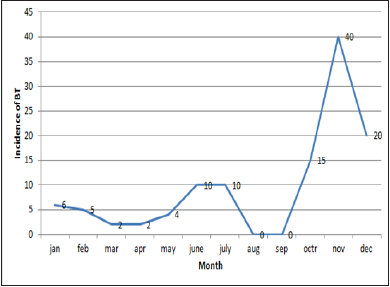
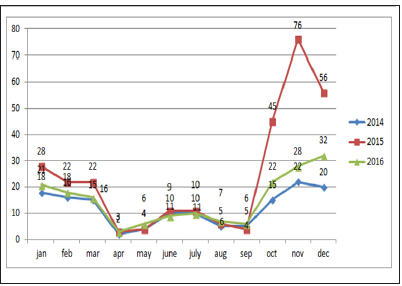
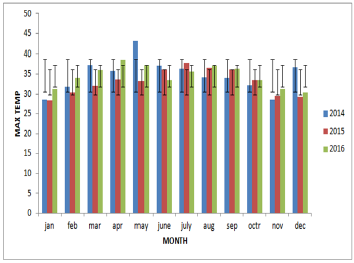
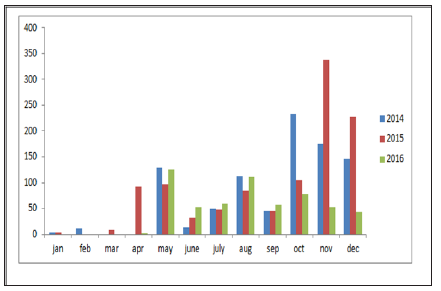
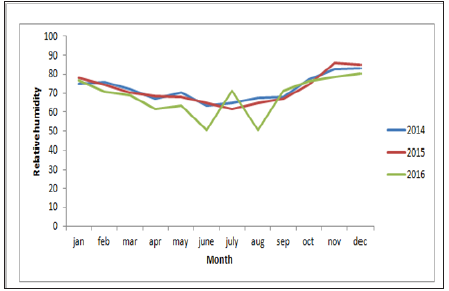

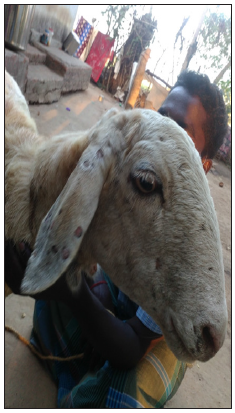
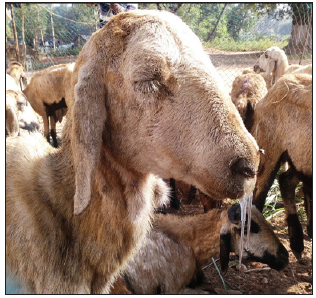








 , where the value
of s0 is the secret and p is a prime number. The secret shares
are the pairs of values (xi, yi) where,
, where the value
of s0 is the secret and p is a prime number. The secret shares
are the pairs of values (xi, yi) where,  and
0⩽𝓍11⩽𝓍2⩽.........𝓍n⩽p-1 The polynomial function f(x) is destroyed
after each shareholder possesses a pair of values (xi, yi) so that no
single shareholder knows the secret value s0 [7]. Actually, no groups
of (k 1) or fewer secret shares can discover the secret s0. That is
when k or more secret shares are available, then we may set at
least k linear equations yi = f(xi) for the unknown si’s. The unique
solution to these equations shows that the secret value s0 can be
easily obtained by using Lagrange interpolation [4].
and
0⩽𝓍11⩽𝓍2⩽.........𝓍n⩽p-1 The polynomial function f(x) is destroyed
after each shareholder possesses a pair of values (xi, yi) so that no
single shareholder knows the secret value s0 [7]. Actually, no groups
of (k 1) or fewer secret shares can discover the secret s0. That is
when k or more secret shares are available, then we may set at
least k linear equations yi = f(xi) for the unknown si’s. The unique
solution to these equations shows that the secret value s0 can be
easily obtained by using Lagrange interpolation [4]. . This set consists of the elements of
the matrix I. Let the secret be the image I and the threshold structure
be (k; n). In this case, it can be constructed a secret sharing scheme
as follows.
. This set consists of the elements of
the matrix I. Let the secret be the image I and the threshold structure
be (k; n). In this case, it can be constructed a secret sharing scheme
as follows.
 by using I.
by using I.

 These ID numbers are transformed to the
These ID numbers are transformed to the .
. is
transformed to the matrix T(x) as follows.
is
transformed to the matrix T(x) as follows. 
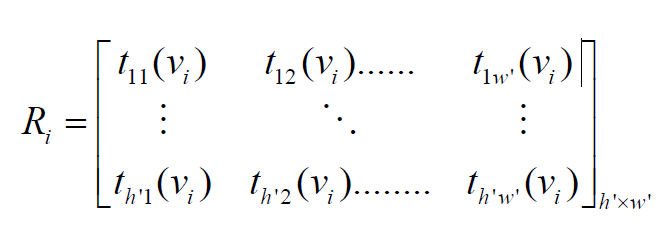

 must be at least k. In the ordered pair
(𝓊ti; Y𝓊ti) the ordered of participant in the W is denoted by i, the
order of the set of participant of ti th participant in the W is denoted by 𝓊ti. Y𝓊ti is the secret piece which is given to participant with
ID of 𝓊ti. These ordered pairs are transformed to the ordered
pairs (𝒱ti;R𝓊ti) i ti
t u v R by using algorithm 1 in [13]. It is used to Lagrange
Interpolation for the ordered pairs ( ; ) i ti
t u v R . Hence it is obtained
the matrix T(x) again. Then it is found the matrix P(x). The image is
constructed with the coefficients of this polynomial.
must be at least k. In the ordered pair
(𝓊ti; Y𝓊ti) the ordered of participant in the W is denoted by i, the
order of the set of participant of ti th participant in the W is denoted by 𝓊ti. Y𝓊ti is the secret piece which is given to participant with
ID of 𝓊ti. These ordered pairs are transformed to the ordered
pairs (𝒱ti;R𝓊ti) i ti
t u v R by using algorithm 1 in [13]. It is used to Lagrange
Interpolation for the ordered pairs ( ; ) i ti
t u v R . Hence it is obtained
the matrix T(x) again. Then it is found the matrix P(x). The image is
constructed with the coefficients of this polynomial.


